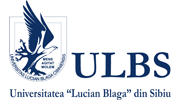Aldrin
Traded as: Aldrec, Aldrex, Aldrex 30, Aldrite, Aldrosol, Altox, Compound 118, Drinox, Octalene, Seedrin, HHDN
What is it? Organochlorinated insecticide, classified as persistent organic pollutant (POP) and banned by the Stockholm Convention since 2001.
Use (purpose): Used against soil insects such as termites, corn root worm, rice weevil, locusts etc. Extensively used for the protection of corn and potatoes crops as well as for the protection of wooden structures.
Aldrin oxidizes rapidly into Dieldrin in the soil, on the plants and in the animal digestive tract, Dieldrin being an even more toxic insecticide. Thus, Aldrin residues are seldom found in food or animal tissue, and only in very small quantities. Nevertheless, Aldrin bioaccumulates as Dieldrin and other derivate metabolites.
Present status: Since 1970-1980 Aldrin was banned in numerous countries, being forbidden in all European Union and in the states having ratified the Stockholm Convention starting with the year 2004.
In Romania: Aldrin was used until 1980 and completely banned since 2004.
Health effects: Aldrin targets the nervous system. Contact with very small amounts of this substance lead to intoxication, with the following symptoms: headaches, dizziness, nausea, vomiting, involuntary contractions of the muscles and limbs, convulsions. The occupational exposure to Aldrin was associated with an significant increase of the number of cases of liver and gall bladder cancer, and some studies even assert that Aldrin disrupts the immune response. The American authority OHSA classified it as potential occupational carcinogenic.
Exposure limits, lethal dose: Aldrin is so toxic that 5 mg of it (a teaspoon) may kill a grownup person.
Contamination sources:
- Occupational: People employed in agriculture (insecticide spraying) are the most exposed, if they are using old Aldrin stocks (stored before the '80s).
- Food: Animal products (dairy, butter, meat) from countries where this substance is still at use (India, Vietnam etc.). Aldrin treated rice coming from these countries as well as certain fish lots imported from Egypt.
Linkuri utile:








